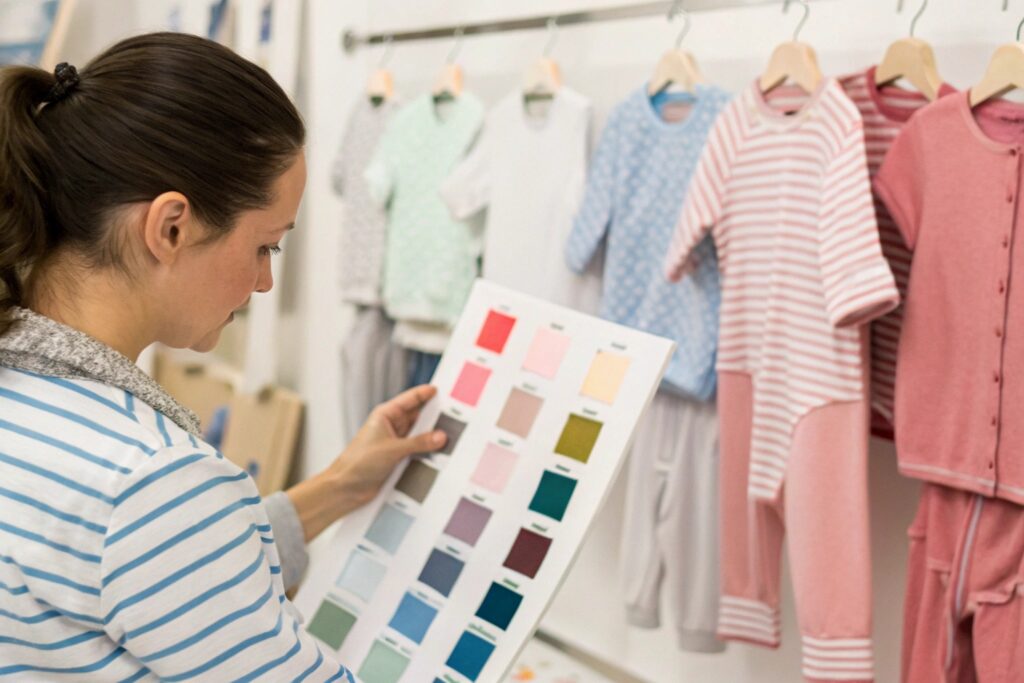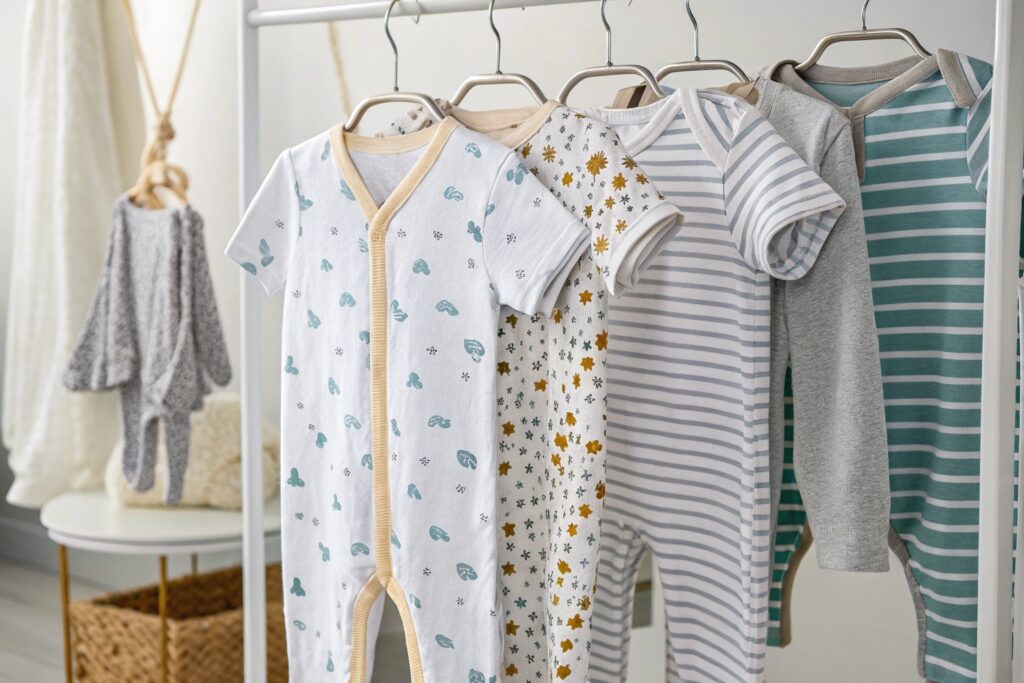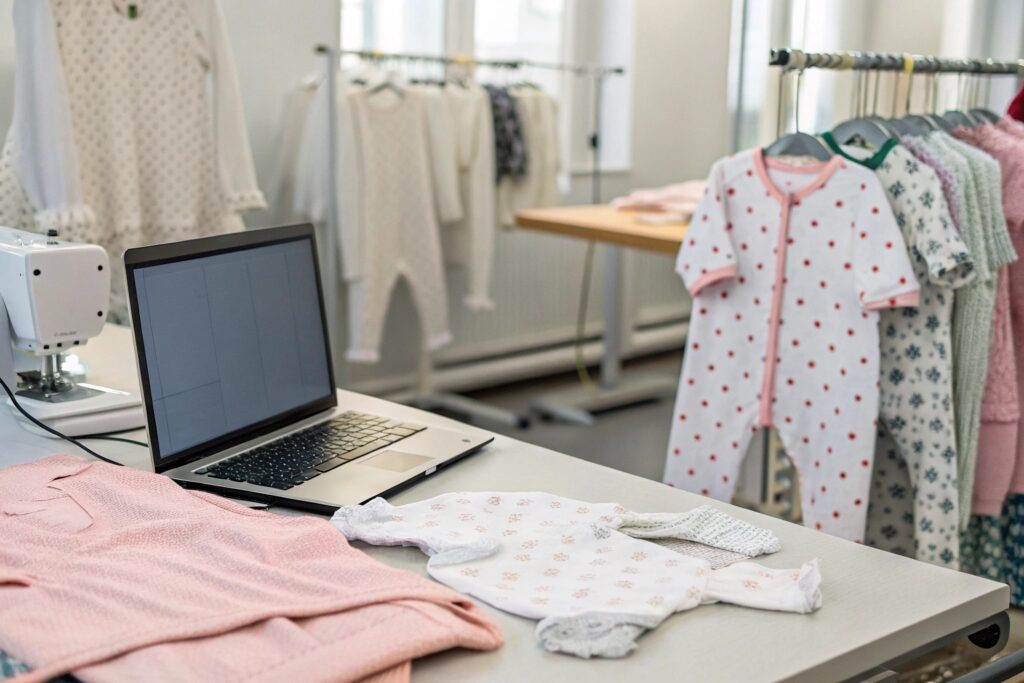Mass production isn’t enough anymore. Today’s parents want more than “soft and cute”—they want special.
Customization is now a key driver of sales and brand loyalty in the babywear market. Brands that offer personalization win attention, trust, and repeat buyers—especially in a saturated space.
Let’s explore why personalization matters, what features parents love, and how your brand can offer custom babywear without overspending.
Why Personalization Drives Sales in the Babywear Market?
Parents no longer want clothes that “everyone else” has. They want items that celebrate their child—and make memories.
Personalized babywear creates emotional connection, gift appeal, and social media buzz, making it one of the most powerful tools to increase conversions and customer loyalty.

What makes personalization so powerful in babywear?
Because babies are personal. Their names, birthdates, family cultures, and personalities are a source of pride. Clothing that reflects this feels more valuable—emotionally and financially.
Parents are:
- More likely to gift personalized clothing
- More willing to pay a premium for custom features
- More likely to share personalized products on social media
- More likely to return for matching items or sibling sets
| Benefit of Personalization | Business Impact |
|---|---|
| Emotional connection | Stronger loyalty, repeat customers |
| Social shareability | Free marketing from customer posts |
| Gift market appeal | Higher average order value |
| Less price comparison | Less likely to be seen as “generic” |
Customization isn’t a trend—it’s a sales engine.
What Custom Features Parents Value Most in Infant Clothing?
Not all personalization is created equal. Parents want custom options that are meaningful, useful, and worth the extra wait or price.
Top custom features in babywear include name embroidery, color or trim selection, monograms, themed bundles, and personalization on accessories like bibs and hats.

What are the most requested customizations from parents?
| Feature Type | Example | Why It Works |
|---|---|---|
| Name Embroidery | “Ava” stitched on chest or sleeve | Adds emotional value |
| Birth Details | Date, weight, or zodiac sign | Creates keepsake memory |
| Custom Prints or Patterns | Floral for girls, space theme for boys | Matches personality or nursery theme |
| Color Picker | Choose trim, button, or cuff color | Feels unique without complexity |
| Monogramming | First letter stitched on hats/rompers | Luxury feel, gender-neutral appeal |
Parents especially love custom bundles that include matching accessories. For example, a personalized bodysuit, hat, and bib set for a newborn gift.
How does custom design affect perceived value?
It dramatically boosts it. A $14 romper becomes a $29 product with name stitching, even if the cost only increases by $3–4. Because it’s the only one in the world. And that’s worth more than fabric.
How to Offer Custom Babywear Without Raising Costs Too High?
Personalization doesn’t have to mean high cost or high complexity—if you plan smart.
By using modular customization, batching production, and limiting choices, brands can offer personalized babywear while keeping costs low and margins strong.
![scalable babywear custom production]
What is modular customization, and why does it work?
Modular customization means offering a fixed base design with a few changeable elements. It lets you:
- Control fabric sourcing
- Maintain consistent sizing and templates
- Limit production delays
- Offer variety without redesigning everything
Here’s a scalable model:
| Product Base | Custom Elements Offered |
|---|---|
| Solid color bodysuit | Embroidered name, birth date on sleeve |
| Soft cotton beanie | Add monogram or zodiac patch |
| Swaddle wrap | Choose trim color and message label |
What are practical ways to reduce cost when offering personalization?
- Batch embroidery: Combine orders weekly and run them in one cycle
- Use print-on-demand for message-based clothing
- Offer only 2–3 font styles and 3–4 embroidery positions
- Charge clearly for custom work: “+ $7 for personalization”
- Limit return eligibility for personalized items
Also, offer standard designs alongside personalized versions. Some customers want it fast. Others want it custom. Give both options.
Tools and Technologies That Enable Scalable Customization?
The right tools can turn complex personalization into a smooth, low-lift process.
Modern embroidery software, print-on-demand platforms, and customization plug-ins make it easy for babywear brands to scale personalization—without overhauling production.

What tools can help manage and deliver custom babywear efficiently?
| Tool/Platform | Function | Use Case |
|---|---|---|
| Embroidery Digitizing Software | Converts names to stitch files | Tajima, Wilcom, Ink/Stitch |
| Shopify Customization Apps | Collect names, preview options | Product Personalizer, Customily |
| Print-on-Demand Services | For message or photo clothing | Printful, Printify (add-ons only) |
| Heat Transfer Labeling | Add names/logos without embroidery | For small brands with home setup |
| Order Management Plugins | Tag personalized orders in system | Track embroidery/print workflows |
These tools help automate repetitive tasks and avoid mistakes—especially once orders scale.
What should you watch out for when scaling personalization?
- Mistyped names: Always confirm spelling
- Inconsistent positioning: Use guides/templates
- Delivery delays: Communicate lead time expectations clearly
- Refund policy: Be firm—most brands do not accept returns for custom orders
Scalable customization is about systems, not surprises.
Conclusion
For babywear brands in 2025, customization is no longer optional—it’s expected. With the right features, tools, and smart planning, you can offer personalized products that delight customers, boost margins, and build brand loyalty without overwhelming your budget or operations.










